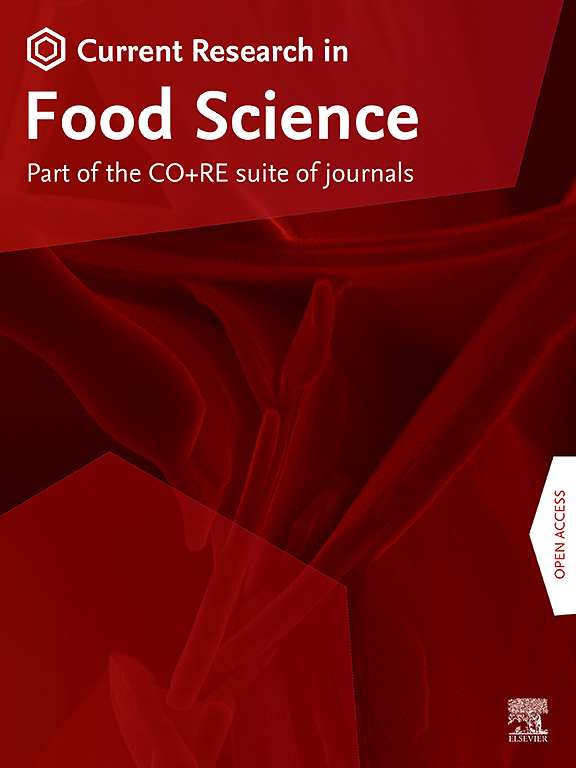酪醇的糖基化和糖的变化产生了有希望的益生元样效应
IF 7
2区 农林科学
Q1 FOOD SCIENCE & TECHNOLOGY
引用次数: 0
摘要
酚类物质是常见的食品成分,糖基化可增强其理化性质和生物活性。本研究对天然酪醇β-葡萄糖苷(红景天苷)和人工合成酪醇β-半乳糖糖苷在C57BL/6J小鼠体内的类益生元特性进行了评价。与酪醇相比,两种糖苷对益生菌的作用均增强。红景天苷能促进乳酸菌的生长,酪醇β-半乳糖苷能显著促进双歧杆菌的增殖。新一代益生菌Akkermansia被酪醇抑制,而酪醇β-半乳糖苷增加。此外,β-半乳糖苷促进了降解黏液的肠道共生菌的增殖,并对某些疾病相关属表现出最强的抑制作用。此外,酪醇和糖苷组之间的代谢组学模式不同,特别是在异黄酮类化合物的生物合成中,异黄酮类化合物在糖苷组中富集。酪醇的糖基化及其糖单位的变化导致了肠道细菌和代谢物的特异性和丰度的差异。鉴于其优越的益生元功能,酪醇β-半乳糖苷具有作为一种新型食品添加剂的潜力。本文章由计算机程序翻译,如有差异,请以英文原文为准。

Glycosylation and sugar variations in tyrosol yield promising prebiotic-like effects
Phenolics are common food constituents, and glycosylation enhances their physicochemical properties and biological activities. This study evaluated the prebiotic-like properties of tyrosol and its glycosides, including natural tyrosol β-glucoside (salidroside) and artificially synthesized tyrosol β-galactoside, in C57BL/6J mice. Both glycosides exhibited enhanced effects on probiotics compared to tyrosol. Salidroside stimulated Lactobacillus growth, while tyrosol β-galactoside notably promoted Bifidobacteria proliferation. Akkermansia, a next-generation probiotic, was suppressed by tyrosol but increased by tyrosol β-galactoside. Additionally, the β-galactoside promoted the proliferation of mucus-degrading gut commensals and exhibited the strongest inhibition on certain disease-related genera. Moreover, metabolomic patterns varied between the tyrosol and glycoside groups, particularly in isoflavonoid biosynthesis, with isoflavonoids enriched in the glycoside groups. Glycosylation of tyrosol and variations in its sugar units led to differences in the specificity and abundance of gut bacteria and metabolites. Given its superior prebiotic functions, tyrosol β-galactoside holds potential as a novel food additive.
求助全文
通过发布文献求助,成功后即可免费获取论文全文。
去求助
来源期刊

Current Research in Food Science
Agricultural and Biological Sciences-Food Science
CiteScore
7.40
自引率
3.20%
发文量
232
审稿时长
84 days
期刊介绍:
Current Research in Food Science is an international peer-reviewed journal dedicated to advancing the breadth of knowledge in the field of food science. It serves as a platform for publishing original research articles and short communications that encompass a wide array of topics, including food chemistry, physics, microbiology, nutrition, nutraceuticals, process and package engineering, materials science, food sustainability, and food security. By covering these diverse areas, the journal aims to provide a comprehensive source of the latest scientific findings and technological advancements that are shaping the future of the food industry. The journal's scope is designed to address the multidisciplinary nature of food science, reflecting its commitment to promoting innovation and ensuring the safety and quality of the food supply.
 求助内容:
求助内容: 应助结果提醒方式:
应助结果提醒方式:


